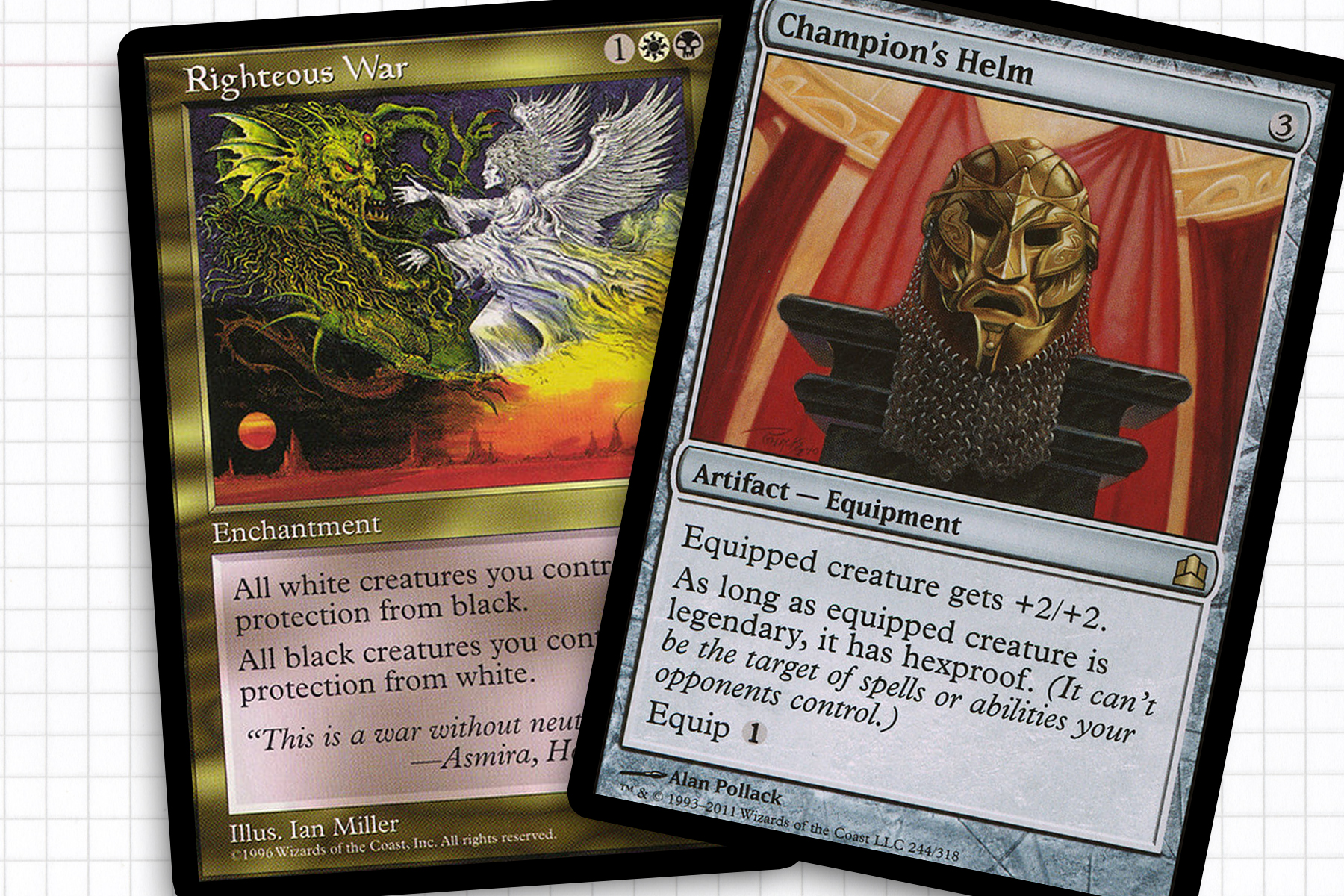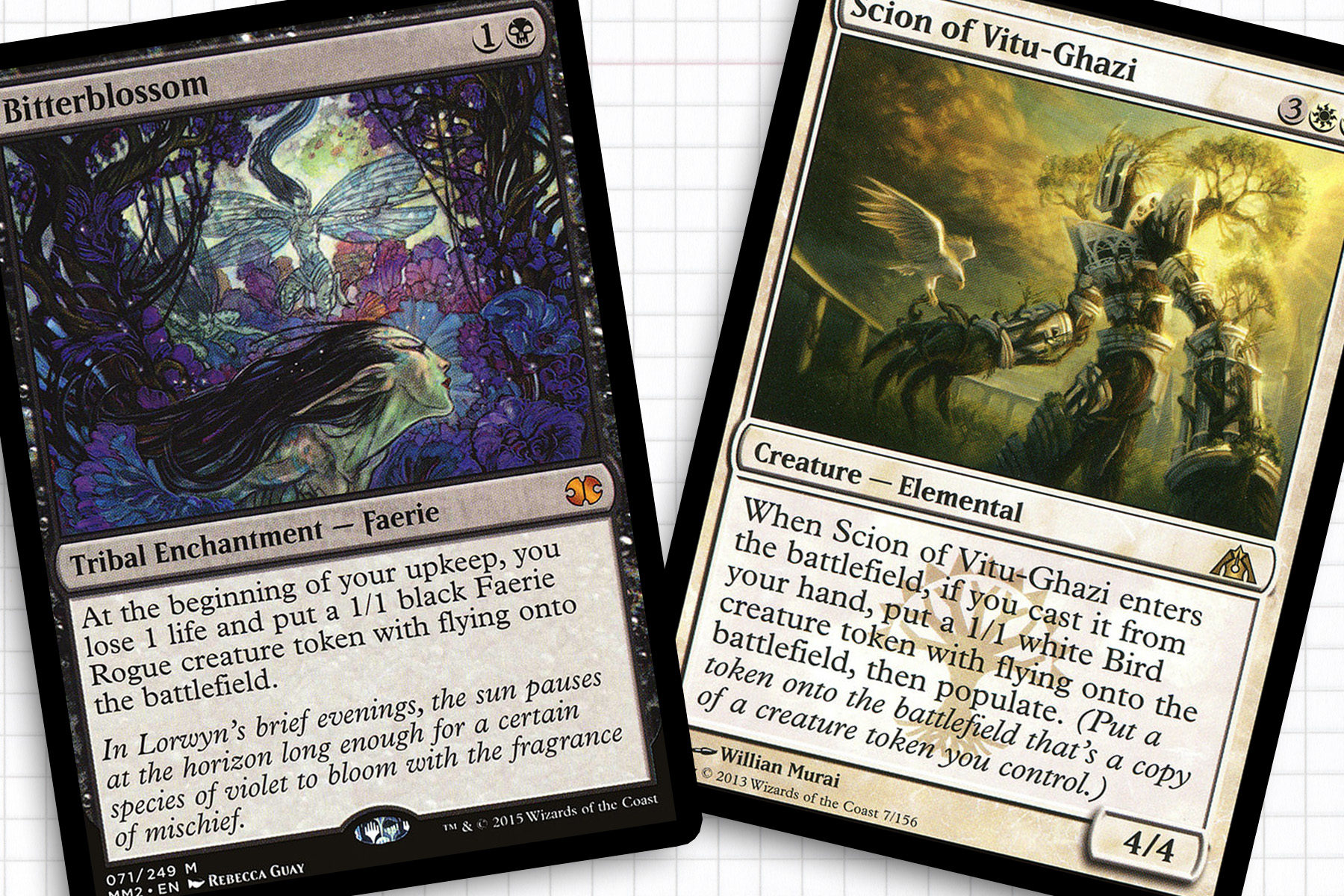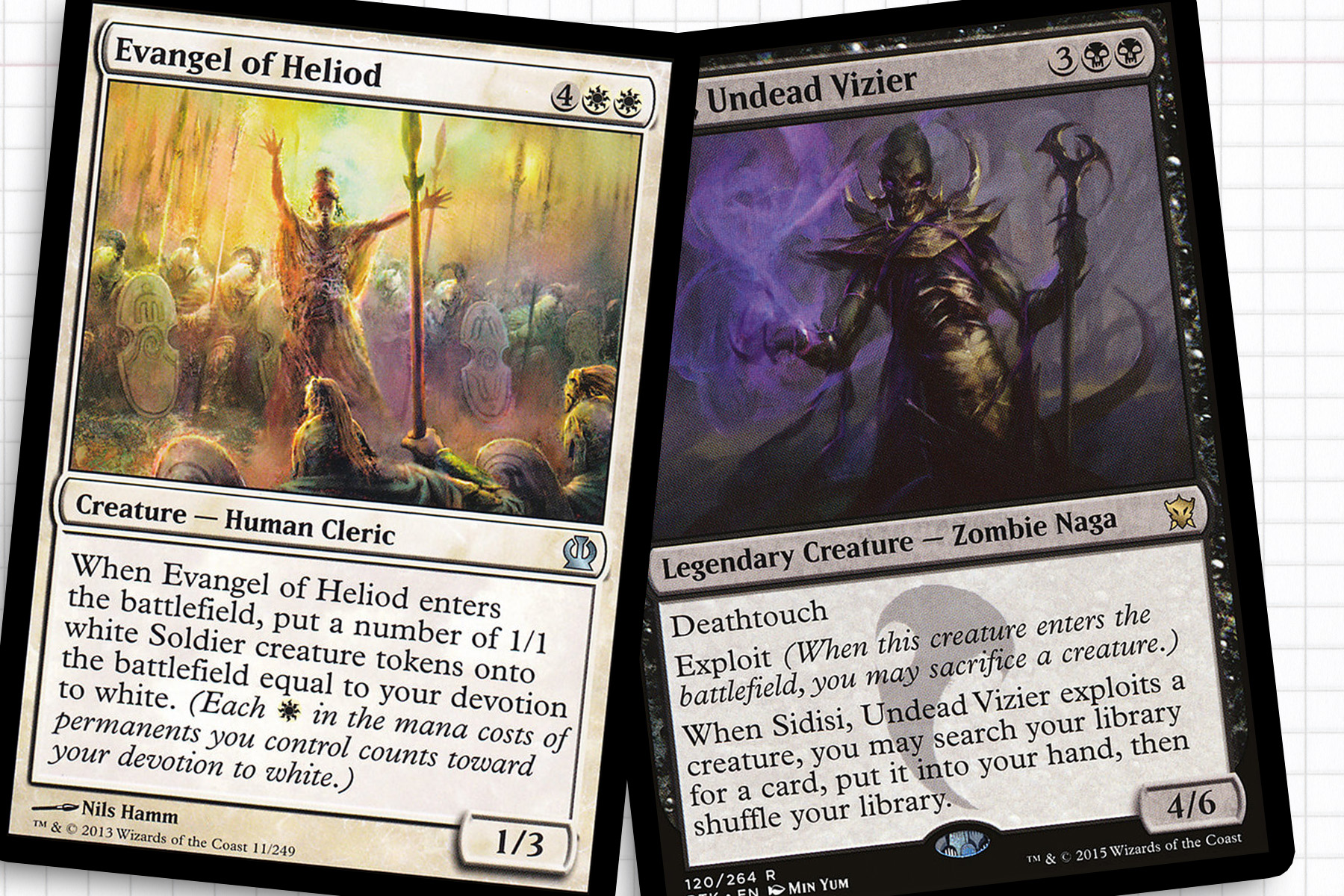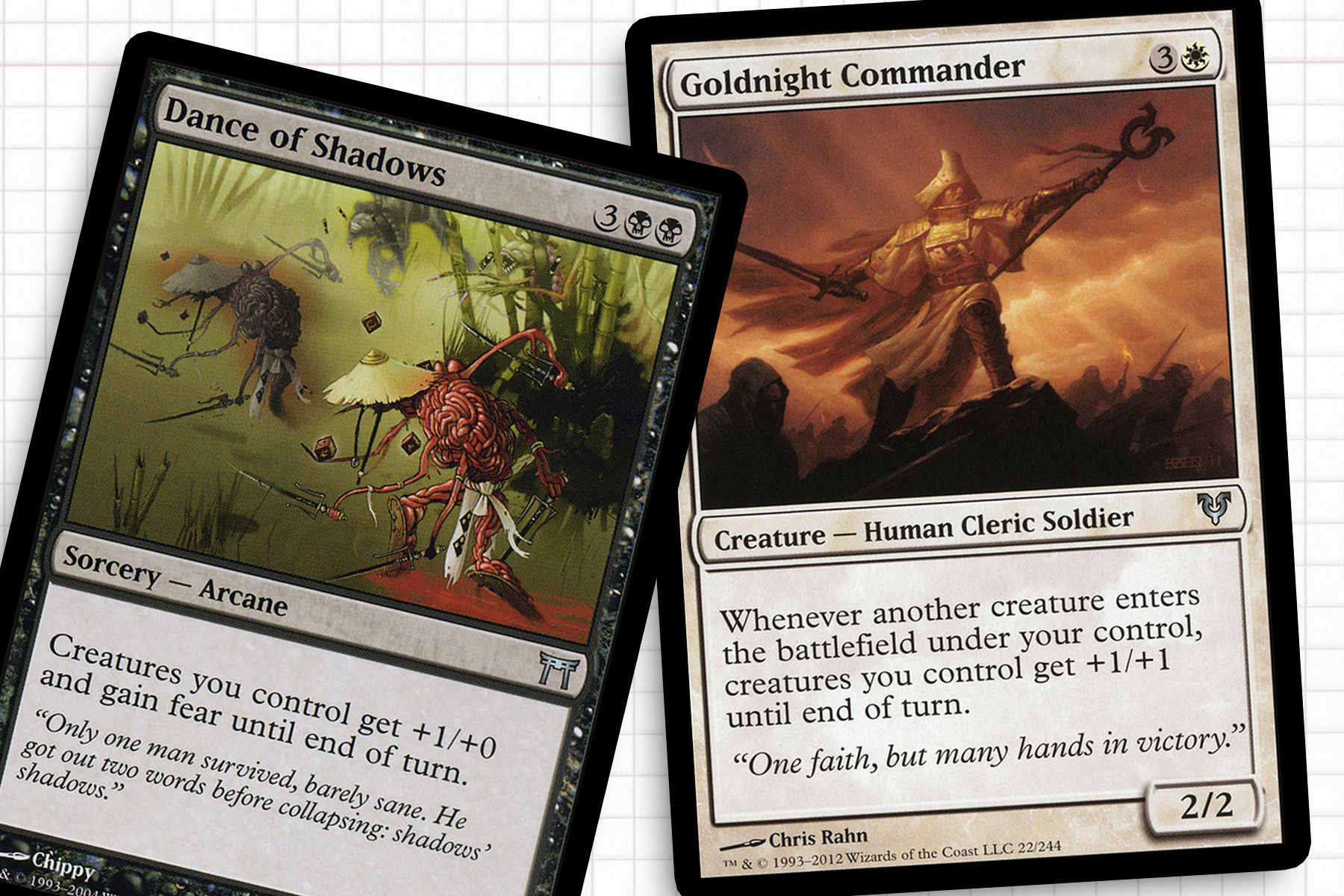I have an Orzhov deck that was one of my favorites that I ever built when I was playing 60-card casual. It is one of two decks from that era of my Magic career that I have tossed around as workable for an article here one day. I won’t get too far into it, but the basic idea was “What if every creature was a Master Decoy and every removal spell was Vengeance?” While I have the color combination in many Commander decks I have built, I was never too excited by any decks built strictly in black and white. Moreover, while I have covered Boros—commonly referred to as the worst Commander color identity—I have yet to touch Orzhov in this article series, much to my surprise.
Why is that? Well, to me, Orzhov in Commander feels highly saturated in very slow and controlling strategies, a playstyle that doesn’t lend itself to content I would find compelling to read. On top of all of that, black and white are not generally known for being effective at card draw, besides effects like Necropotence. And the Orzhov lack solid tools for ramp outside of flooding the battlefield with variants of Sol Ring and Thran Dynamo. With these tools taking up a considerable amount of space in a deck list, in reflection, most Orzhov decks I play against or think up end up to be very bloated with the same cards.
While I think Ghost Council of Orzhova, Athreos, God of Passage, and Ayli, Eternal Pilgrim are all fine decks, I perceive them as too slow and plodding for my taste. Typecasting Orzhov as merely a “bleeder” deck is shortsighted and overlooks options like Daxos the Returned, Vish Kal, Blood Arbiter, or today’s topic Ravos, Soultender, which play much differently. I have been overlooking Orzhov for too long without exploring what it can really do, so let’s get started.
Ravos, Soultender
“As an oracle of Athreos, the god of passage, Ravos knew the fleeting nature of life. Even so, watching his beloved perish in battle was too much for Ravos to bear, and he struck a deal with the god. Ravos swore to help Athreos guide the dead to the Underworld in exchange for seeing his dead lover once each year. In the interim, Ravos plots her rescue and secretly defies Athreos by escorting his wards back to the land of the living.”
I want to first address that I will not be fully utilizing the partner mechanic for this deck skeleton. Personally, I think Ravos can already do enough to be a unique deck on his own, but including Tymna the Weaver doesn’t require you changing the deck themes. For consistency it’s a no-brainer to keep her in the Command Zone as a method of card draw and make the deck considerably better equipped.
What I am to build is a Black/White Tokens deck that doesn’t use the tokens as sacrifice fodder, but to attack through for damage. I want to avoid being a Voltron deck in favor of benefiting from Ravos’ status as a walking Glorious Anthem and free Raise Dead each turn. The real challenge will be to make a deck that treads on the similar space as Karador, Ghost Chieftain and Ghave, Guru of Spores without having the core tool of Green. I think this should be an interesting challenge.

Safety First
This is important for any deck that relies on its general. If we want to run our game on a tight recursion plan, protection spells—Darksteel Plate and the mandatory Swiftfoot Boots/Lightning Greaves—are a must to keep Ravos around. But this may even be a good deck to include Champion’s Helm to move Ravos out of range of Pyroclasm effects and pack in a little more redundancy.
Since we are aiming to play as a token deck, it is also wise to extend our protection to our entire battlefield with non-discriminatory protection spells like Akroma’s Blessing, Rootborn Defenses, and Make a Stand, or constant effects like Absolute Law, Righteous War, Inner Sanctum, or Earnest Fellowship. Additionally, I understand the appeal of Eldrazi Monument, but I might be partial to including Akroma’s Monument first.

Multiplicity
The chief part of any tokens strategy is the tokens and the ways to get the tokens. It’s complicated, I know. Anointed Procession is an important piece of tech that Black/White tokens had been missing just one year ago to supercharge our Bitterblossom, Secure the Wastes, Deploy to the Front, and Cloudgoat Ranger.
This is a deck where I would be willing to dig out my copies of Skirk Ridge Exhumer, Goldmeadow Lookout, Sliversmith, and Icatian Crier for their repeatable abilities to turn bulk in our hand into creature tokens with unique characteristics. Scion of Vitu-Ghazi is a wildcard that can generate tons of value from any random board state it drops into. Archdemon of Unx does a great job of upgrading any small creature you have on the board—like when you’ve made Eldrazi Spawn and you don’t need the mana. With Procession, Precursor Golem becomes a possible five-for-one, fifteen power for five mana. And Kalitas, Bloodchief of Ghet is every hipster’s original New Blood.
Lastly, with enough token producers running around, a blink package that includes cards like Eldrazi Displacer, Cloudshift, Eerie Interlude, and Felidar Guardian (among others) should mean we can keep our board full and ready to appease Eldrazi Monument if it hits play.

Undying Bond
While I cannot figure out a way to ultimately break Ravos’ ability to return a creature every turn—short of relying on another player to enchant us with Paradox Haze—I certainly feel that it is underappreciated. Having played my fair share of games with Karador, Ghost Chieftain, I can’t imagine this plays much differently, besides locking in your choice of creature earlier in the turn. It’s no Sun Titan or Emeria Angel, but even if all we’re recycling Sengir Aristocrat, Abhorrent Overlord, or Evangel of Heliod to produce token armies every turn, I think we can distill more value.
When we’re not rebuying token generators: retrieving an Ashen Rider, Angel of Despair, or Massacre Wurm as removal in lieu of spells means we can maximize decks slots without losing board presence. Kokusho, the Evening Star or Gray Merchant of Asphodel are both viable life drain effects to close out games. We can also recur Sidisi, Undead Vizier to tutor out any others required answers.

Just Passing Through
Since there are not enough variants of Kismet to suppress our opponents to my liking, we’re going to need a solid plan to walk all over them. Once we’ve spun our wheels long enough to amass an army of tokens and specialized creatures, my thoughts immediately go to cards Goldnight Commander, True Conviction, Valor of Akros, Vault of the Archangel, and Mirror Entity to make all our creatures formidable the turn we plan to strike. As ways to guarantee that damage gets through, I would deploy Profane Command, Dance of Shadows, Hideous Visage, and maybe even Skyshaper for varying levels of beatdown. Bonus points if you make the kill in a fun way like Charge Across the Araba or a Geist-Honored Monk seated on a Dragon Throne of Tarkir.
Beyond finding ways to sidestep your opponent’s creatures, the next best option is to simply not let your opponents have creatures. Unfortunately there are only so many cards like Plague Wind and In Garruk’s Wake. That’s why my ultimate endgame plan would be to set up the combo of Teferi’s Protection and Death Cloud, possibly with the Sidisi, Undead Vizier I mention earlier.
I have to wonder if Orzhov might be the next candidate for the community to champion after Wizards figures out some solid design space to push Boros. I certainly don’t want to imply that it should have all answers for all situations or that we should get a deck delivered to us of three new overpowered generals. But having run through this exercise, I find Orzhov lacking in the current Commander landscape. I could be stirring up hysteria, though. It is entirely possible that Black/White Vampires will be the injection of new blood we needed once Rivals of Ixalan sees print and fleshes the strategy out.
As always, I turn the mic back to all of you. If you have different opinions or even a deck that blows your playgroup out of the water in interesting and unknown ways, I want to hear from you. I want to fall back in love with one of my favorite color identities of Magic days past. As always, you can find my on Twitter, I would love to here whatever feedback I can get. Until next time, everyone!

